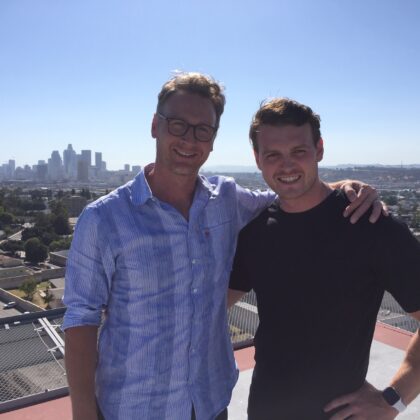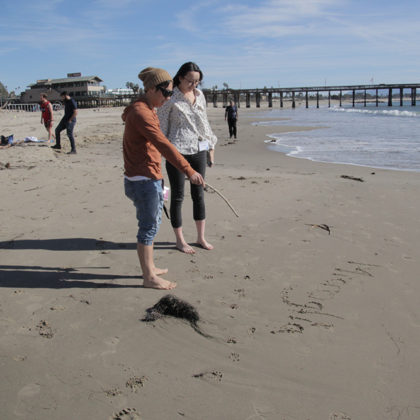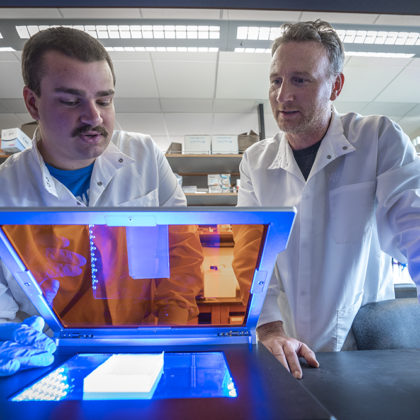Dr. Bell’s lab aims to illuminate the epigenetic mechanisms that establish and maintain stable gene expression states. Ultimately, we aim to unravel the crosstalk between epigenetic regulation and cell plasticity.
Stories
Guided by COMPASS, USC undergraduates navigate stem cell research at inaugural symposium
Thirty undergraduates gathered to share their research at the first year-end symposium for USC CIRM COMPASS, a comprehensive two-year program designed to prepare juniors and seniors for careers in stem cell biology …
USC Stem Cell study throws our understanding of gene regulation for a loop
The blueprint for human life lies within the DNA in the nucleus of each of our cells. In human cells, around six and a half feet of this genetic material must be …
Building an Incubator for Medicine of the 21st Century
USC Stem Cell is pleased to introduce our new publication. We hope you’ll enjoy reflecting back on our history, while looking ahead to the transformative times to come. Read now at https://stemcell.keck.usc.edu/wp-content/themes/stemcell/incubator.
Weiss-Kruszka syndrome and the failure to establish neuronal identity
Weiss-Kruszka syndrome is a rare neurodevelopmental disorder characterized by craniofacial anomalies, developmental delay, and autistic features. Researchers at the Institute of Molecular Biotechnology (IMBA) of the Austrian Academy of Sciences and the …
Scientists feel the sand between their toes at the retreat for USC’s stem cell department
A pair of young scientists picked up a piece of driftwood and thoughtfully traced a series of letters in the wet sand of Ventura Beach. The word “microglia”—referring to the immune cells …
Drug-like molecule points to novel strategies for cancer therapy
A decade ago, genome sequencing revealed a big surprise: about 50 percent of human cancers are linked to mutations in what are known as epigenetic regulators, which control the activity of genes. …
Design redundancy is in our DNA
Design redundancy is not only an invention of engineers for building machines, but also a principle of nature for designing organisms. This principle is at play in the regulation of the genes responsible for directing stem cells to multiply themselves in the developing mouse embryo, as described in a new study in Science Advances.







